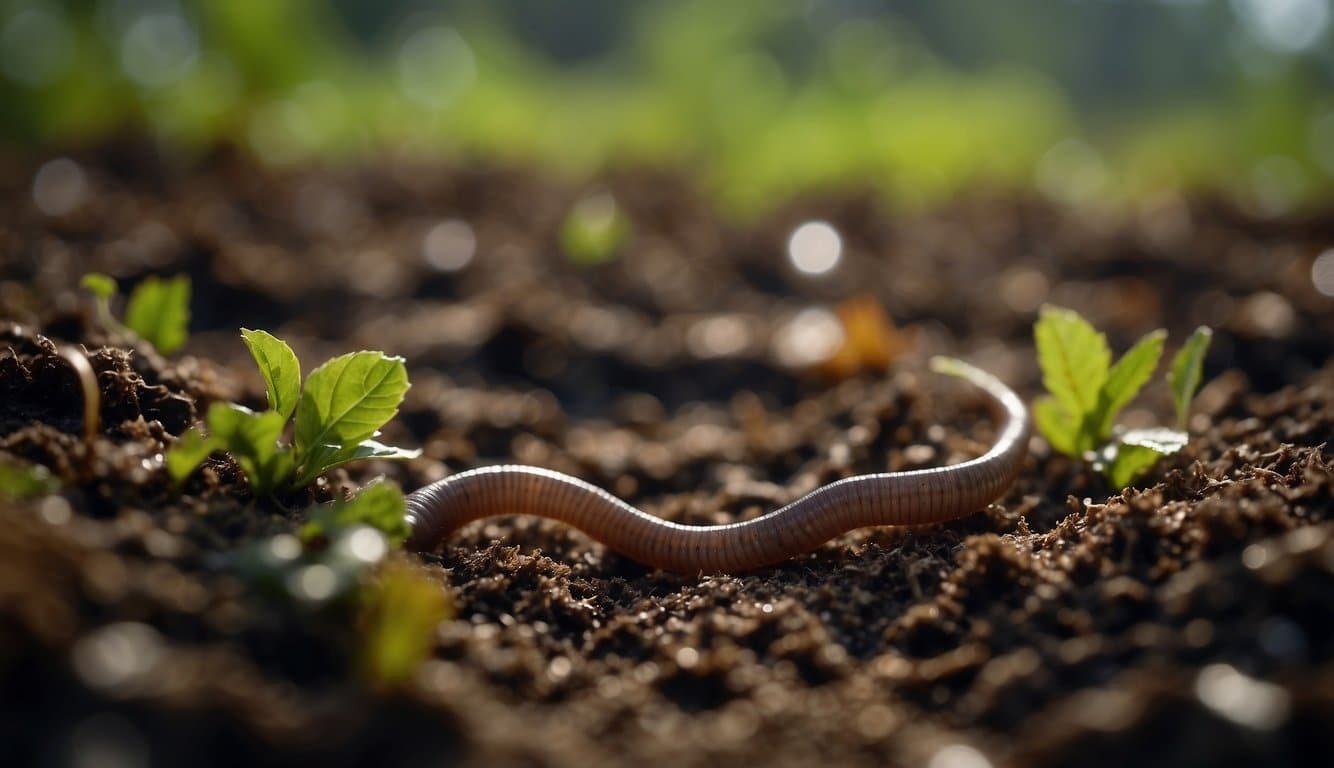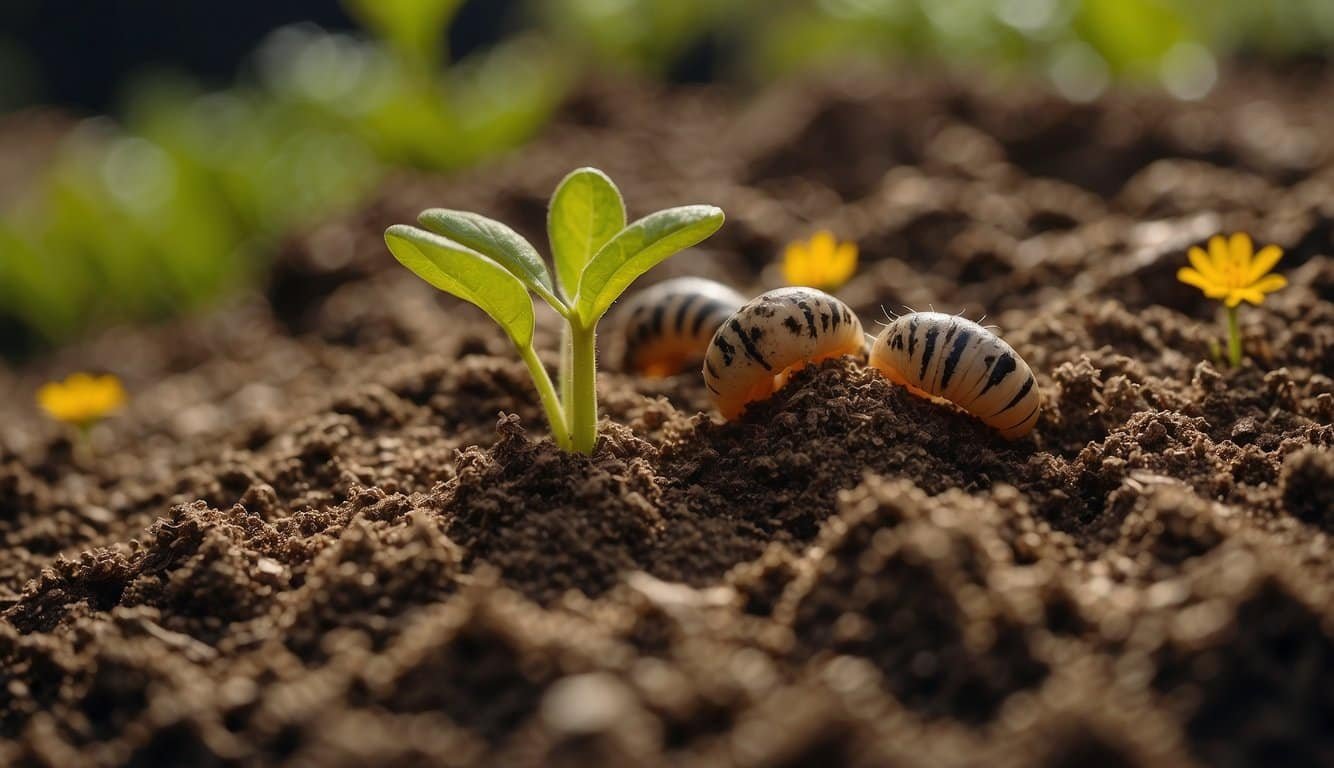Overview of Worms

Worms are a diverse group of invertebrate animals that inhabit various ecosystems worldwide. There are several major groups of worms, each with unique characteristics and biological importance.
Annelids, or segmented worms, include familiar earthworms. These are noted for their segmented bodies, which provide them with impressive locomotive abilities and have contributed immensely to soil fertility and structure through their burrowing actions.
The Platyhelminthes group comprises flatworms. These creatures can be free-living, like the planarians, or parasitic, as seen with tapeworms and flukes. Their flattened bodies allow them to navigate their often aquatic environments or, when parasitic, to adhere to their hosts’ internal structures.
Another interesting group is the Nematoda, or roundworms. These cylindrical, elongated creatures are often microscopic, such as the Caenorhabditis elegans, which is intensively studied for scientific insights into development and genetics. However, some roundworms can become problematic as they include species that affect plant roots and others that can parasitize animals, including humans.
There’s also the less known but equally interesting group of arrow worms, or Chaetognatha. These are predators in marine environments, playing an essential role in the oceanic food chains.
Finally, the term helminths is sometimes used to describe parasitic worms, which are of great interest in the medical and veterinary fields due to their impact on host health.
- Annelids (Segmented Worms): Earthworms, leeches
- Platyhelminthes (Flatworms): Tapeworms, flukes
- Nematoda (Roundworms): Heartworms, root-knot nematodes
- Chaetognatha (Arrow Worms): Predatory, marine
- Helminths: Often refers to parasitic species in humans and other animals
To grasp the importance of these organisms, consider that worms play a fundamental role in many ecological processes, such as nutrient cycling, and can also have significant economic impacts, particularly when it comes to the parasitic varieties affecting agriculture and health.
Habitats and Ecological Impact
Exploring the world of worms leads us to diverse habitats where they play critical roles in the ecosystem. From the soil enriching activities of earthworms to the health implications of parasitic worms, each group has a significant impact on its environment.
Soil and Garden Ecosystems
In the intertwining layers of soil and organic debris in gardens, earthworms thrive, creating tunnels that aerate the soil and facilitate water movement. They digest organic material which, when excreted as worm cast, releases essential nutrients that enrich the soil, making them invaluable for healthy garden ecosystems. Moisture levels within soil are maintained through the hydrological activities of these organisms, resulting in optimal conditions for plant growth.
Parasitism and Human Health
Worms aren’t just confined to the ground; they can impact human health significantly. Parasitic worms, such as tapeworms, roundworms, and hookworms, invade the human body often through skin contact with contaminated soil or the consumption of undercooked meat. These unwelcome guests attach themselves to the intestinal wall, absorbing nutrients and sometimes causing severe health issues. Diagnosing parasitic infections might include a tape test, blood tests, and imaging tests, while treatments often involve antiparasitic medications like albendazole or mebendazole.
Aquatic Worms and Marine Life
In the domains of freshwater and marine life, aquatic worms play pivotal roles. Annular relatives like the fluke or the marine bristle worms contribute to the ecosystems by breaking down dead organisms and recycling nutrients back into the environment. They are key participants in the aquatic food web, often serving as a food source for fish and other marine creatures.
Diet, Reproduction, and Life Cycle

Examining the diet, reproduction, and life cycle of worms unveils a fascinating world of these often-overlooked creatures. They play vital roles in enriching soil, recycling waste, and serving as food for various animals.
Feeding Behaviors
Worms are crucial for soil health, breaking down organic matter and aiding in plant growth. Earthworms, in particular, consume dead leaves and other plant debris, which decomposes and mixes with the soil as they move, enriching it and making nutrients available to plants. Larvae of certain species might specialize in diets like watercress or decaying wood, reflecting the diversity in worm feeding habits.
Reproductive Strategies
Worm reproduction is diverse, with some species like earthworms being hermaphrodites—each individual possessing both male and female reproductive organs. They exchange sperm with other earthworms and later deposit cocoons in the soil, which will give rise to new worms. Parasitic worms, such as certain nematodes, often have complex life cycles involving different stages and sometimes multiple hosts, like vertebrates or invertebrates.
Development and Growth
Worms develop through various stages. For instance, earthworms hatch from their cocoons as tiny juveniles and grow into adults, a process which can take weeks to months depending on the species and environmental conditions like rain and oxygen availability. Other worms, such as free-living annelids or larvae of parasitic species, might undergo complex transformations or migrations before reaching maturity.

